 Unnecessary RootMotion is added
Unnecessary RootMotion is added
There is a problem that the route motion changes automatically. If I create a motion that only raises one arm of the Kyle, the root motion seems to change automatically.
There is no problem when editing in UMotion, but it happens when I set animation on a character and play it, so it might have been changed when I exported. IK has the same symptoms whether I use it or not.

Hi,
thank you very much for your support request.
If your humanoid animation contains movements that move the center of mass of your character a lot, Unity generates root motion curves that contain subtle motion (that usually isn't really noticeable in-game). I'm not sure if Unity is doing that for a specific reason, it's however out of UMotion's control.
You can let UMotion generate the root motion curves (instead of Unity) getting rid of that subtle motion. In order to enable UMotion's root motion generation, open the settings (click the button with the "gear" icon) and switch to the "clip" tab. Then set the tick next to "Generate Root Motion Curves" and re-export your animation.
Please let me know if you have any follow-up questions.
Best regards,
Peter
 Bones for eyes
Bones for eyes
Hi,
I have a character with a fuse skeleton that is missing bones for the eyes. I can create bones using the extrude tool but they do not correspond with the eyeballs fbx models. I need the purple figure next to the bones that i make but right now they are transforms. I have another character that I was previously able to correctly rig but I do not remember how I did it. Can you explain the process of how I can do this?
Thanks

Hi,
thank you very much for your support request.
Make sure that the eye bones of your *.fbx model are correctly configured as eyes in the humanoid avatar configuration (see "Rig" tab of the inspector).
If your *.fbx model doesn't have any eye bones, then you have to use a 3D modeling tool like Blender to create new bones for the eyes and then bind the mesh vertices of the eyes to the bone (so that the eyes correctly move with the bones). While it's possible to create new bones inside UMotion, this binding process (called skinning) is not possible within UMotion.
Please let me know if you have any follow-up questions.
Best regards,
Peter
 Hanging up when open clip editor
Hanging up when open clip editor
Hi,
In my project, UMotion doesn't work.
1. Choose Window -> UMotion Editor -> Clip Editor.
2. Black window is opened and no response.
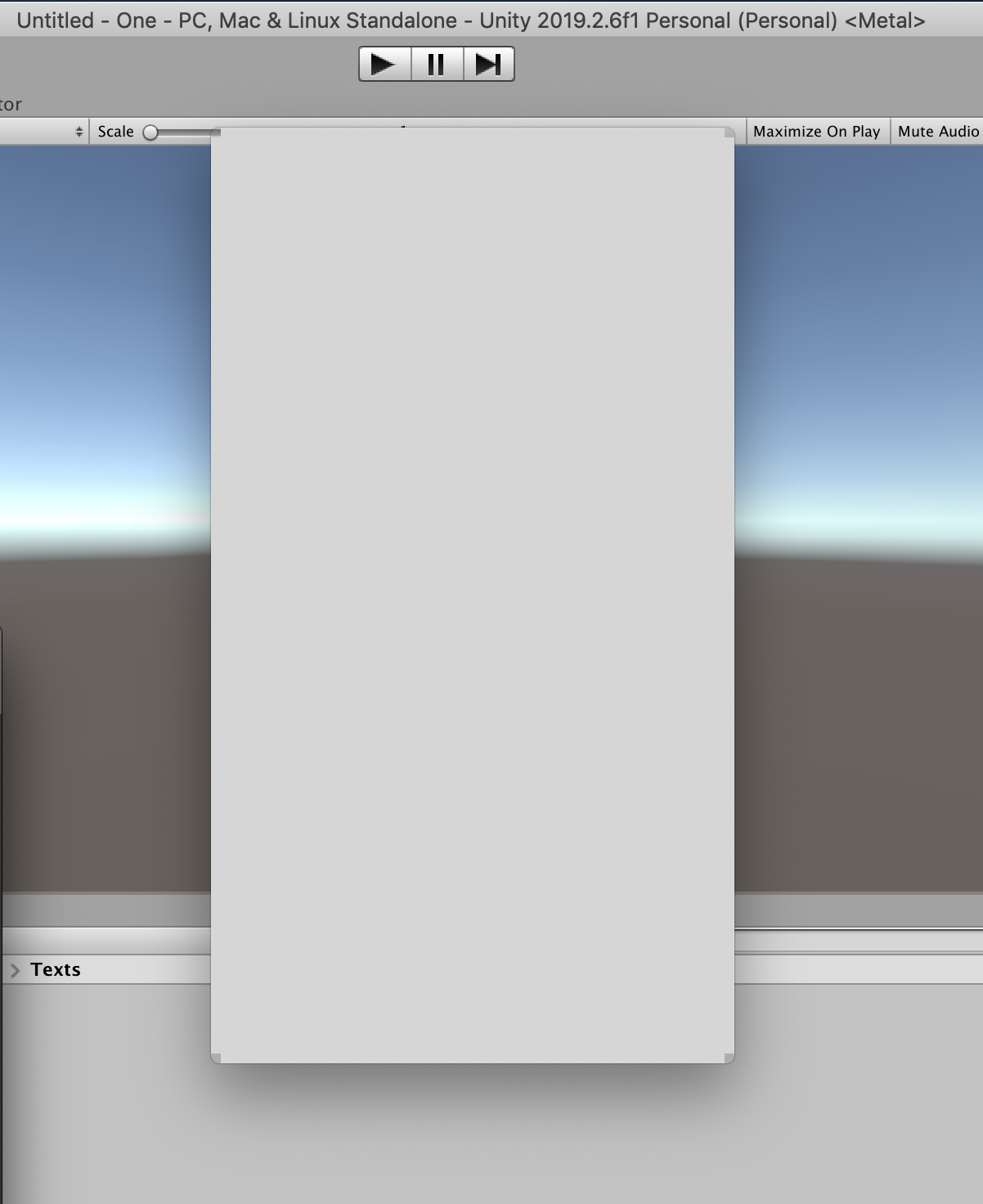
I tried:
- Remove UMotion and reimport UMotion -> same result
- Remove project library folder -> same result
- Create new empty project and import UMotion -> Works correctly
My project may be something wrong.
How should I investigate the issue?
If you have any ideas to solve, please let me know.
Thank you

Fixed in UMotion V1.20p03. Thanks for reporting.
Best regards,
Peter

 Fatal error in GC
Fatal error in GC
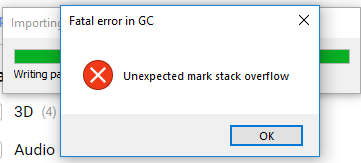
When importing UMotion Pro, it gets stuck at Writing package items and after several minutes, I get this error. It is fine when importing in a new project, but I can't import UMotion Pro in my current project.

 Assistant tool is empty
Assistant tool is empty
Hello, I started using the add-on yesterday thanks to the humble bundle, but as useful as it looks, I have an embarrassing issue : as you can see on the screenshots, the assistant tool window only displays the current tool (select, move, rotate etc) at the top, but no matter what the rest of the window which is supposed to display transform/rig values is just a gray panel.
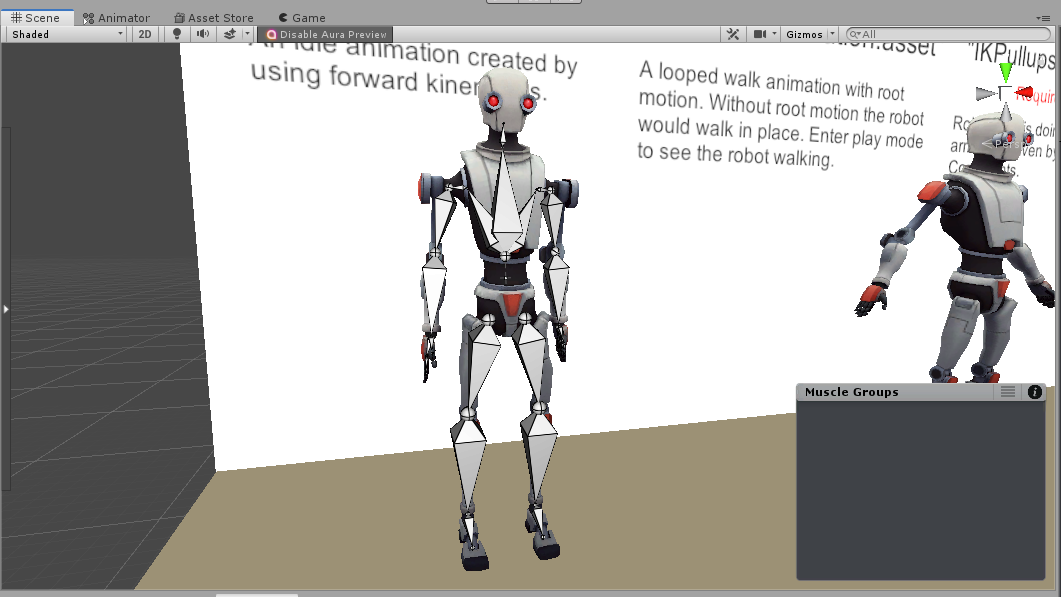

I haven't found anything similar on the net, but as I said I started using UMotion only recently so I hope I haven't left out anything obvious ! In any case, thanks in advance for helping me out ! :)

This problem is fixed in UMotion V1.20. Thanks for reporting.
Best regards,
Peter
 Inherent Rotation
Inherent Rotation
I was wondering if there is or was a way to turn off inherent rotation?
So that the head stays at its default location as you move the upper or lower body

Hi,
thank you very much for your support request.
You could setup an IK chain for the neck/head and add a Child-Of constraint with IK Pinning functionality. Everytime you enable IK Pinning in your animation, the head position and rotation will be locked in world space. Other than that, there is currently no way to disable inherent rotation.
Further information regarding IK and IK pinning:
UMotion Pro - Inverse Kinematics
UMotion Pro - Child-Of Constrain (<-- please watch this video before the IK Pinning video)
Please let me know in case you have any follow-up questions.
Best regards,
Peter

 How can I export only Additive layer?
How can I export only Additive layer?
I have one animation its Idle, but I want to make a little different change about leg position but in Additive layer.
I Imported my animation track to UMotion Pro and I created additive layer I fixed my leg positions but now how can I export only this additive keyframes? I mean in my animation controller still have same animation but I will add Additive layer and drag this exported animation.

Hi,
thank you very much for your support request.
UMotion cannot export only the additive layer of an animation. You need to export the whole corrected animation clip. Just replace your old animation in your animation controller with the corrected one. If you want to keep both, add both to your animator controller and blend between them (you can do this either via transitions or via an override layer).
Please let me know in case you have any follow-up questions.
Best regards,
Peter

 How do I copy/paste keyframes between different bones?
How do I copy/paste keyframes between different bones?
Hi! Some changes on the bones hierarchy of the model I'm animating
were made after I already done some animations, and now when I open the
UMotion project the animation is obviously broken with a lot of
yellow/missing animated properties.
So I have a few questions:
-
Is it possible to copy/paste the keyframes from the already animated
properties from the old bone hierarchy (that are all now missing links
in the animation) to the new bones so that I don't need to reanimate it
all?
- Is it possible to get rid of the missing properties (like it
is done in Unity's animation window by right clicking the property and
selecting to remove it)?
Thanks in advance,
Diego

Hi,
thank you very much for your support request.
"- Is it possible to copy/paste the keyframes from the already animated properties from the old bone hierarchy (that are all now missing links in the animation) to the new bones so that I don't need to reanimate it all?"
Currently this feature is not implemented, but I'm working on it. The reason why this feature isn't implemented yet, is because most of the time you can't simply copy keys from one bone to another as the local position/rotation usually don't translate well to the other bone (due to different initial position/rotation).
Are you working on a project of type "generic"? In that case you could workaround that this is currently not supported by exporting the animation, then copy&paste the keys in Unity's Animation Window and re-import the animation into your UMotion project.
"- Is it possible to get rid of the missing properties (like it is done in Unity's animation window by right clicking the property and selecting to remove it)?"
Yes. Switch into Config Mode and click on the "Cleanup" button. This will remove all missing transforms from the project.
Best regards,
Peter

 Moving hips and pinned IK Transform moves hips only.
Moving hips and pinned IK Transform moves hips only.
If I select one or multiple pinned IK transforms + hips and then move them with the movement widget or movement tool, only hips will move, while all of the selected transforms should move.
It's inconvenient, since very often it's desirable to move both hips and a pinned IK, so that you don't have to unpin it needlessly. Same effect can be achieved by moving first the hips and then the transforms by the same amount, but it's not ideal.

This suggestion is implemented in UMotion V1.20. Thank you very much for reporting.
Best regards,
Peter

 Unpinning an IK bone makes the transform box disappear.
Unpinning an IK bone makes the transform box disappear.
Here is the animation in a frame with the left leg pinned:
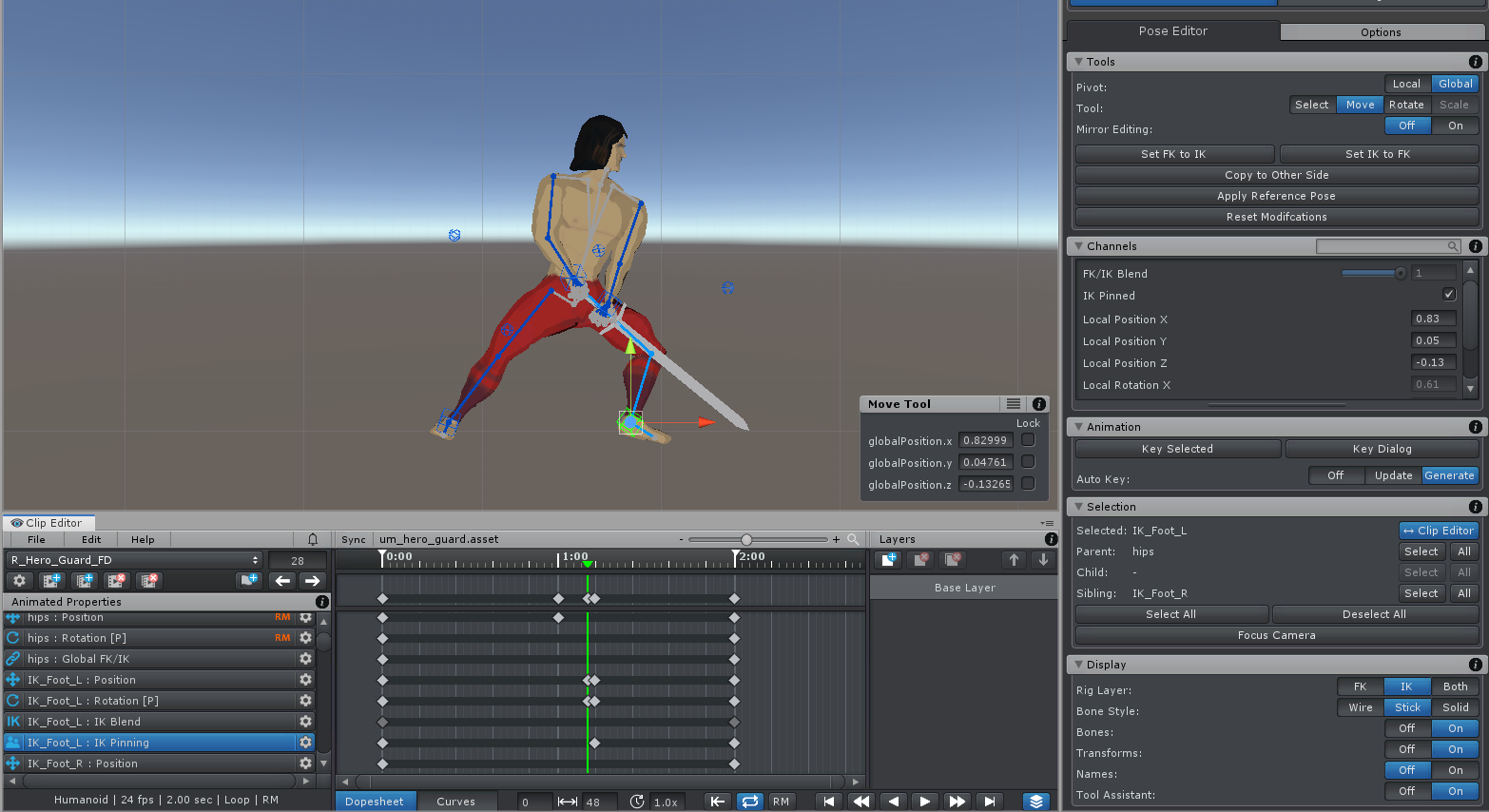
Here is the animation in the next frame, where the left leg has been unpinned:
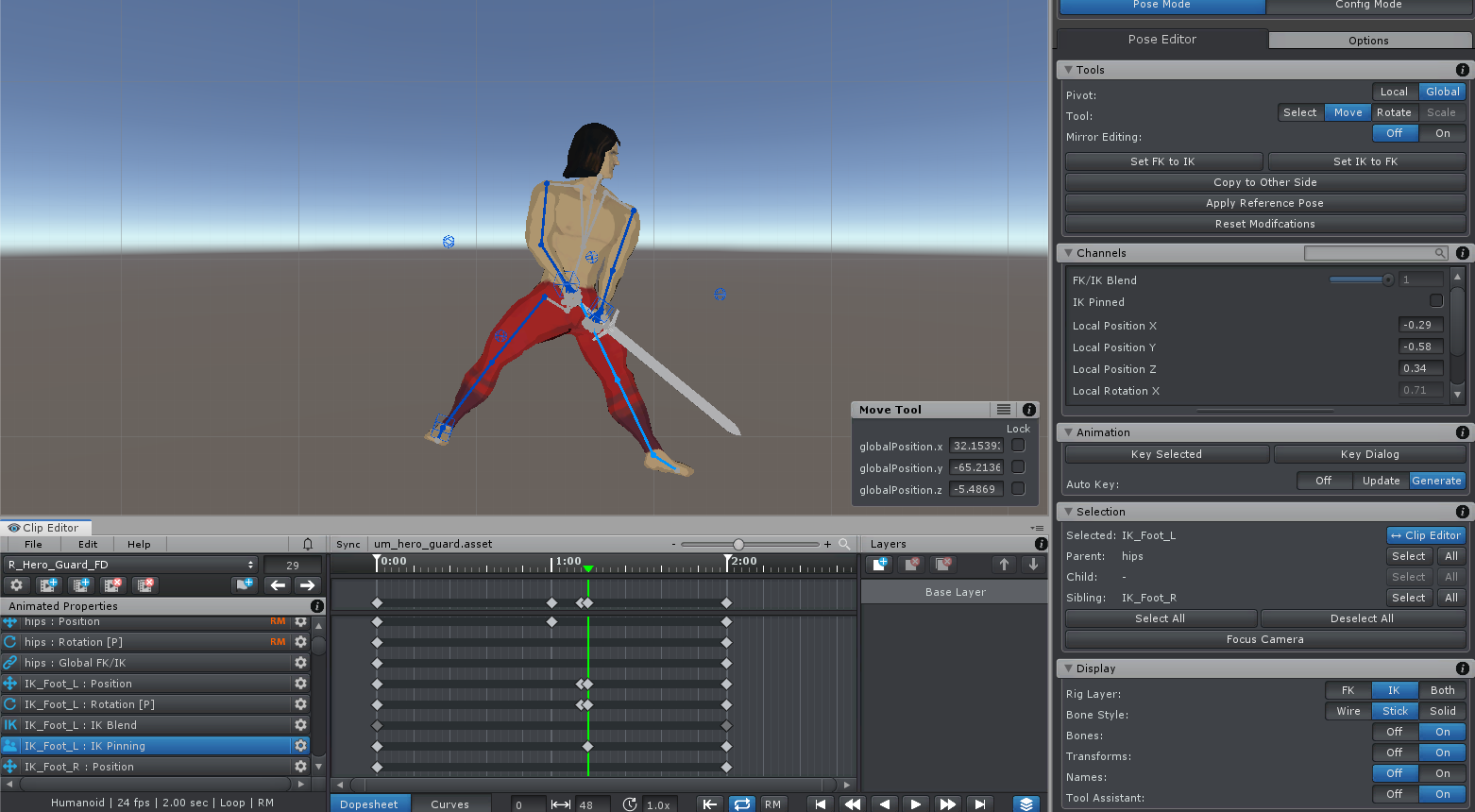
As you can see, the box with the movement transform has disappeared and you can't select it anymore. The Move Tool still works, but it's definitely not ideal. Both frames here were created automatically by unchecking the IK Pinned box in the channels section.

This problem is fixed in UMotion V1.20. Thanks for reporting.
Best regards,
Peter
Customer support service by UserEcho
